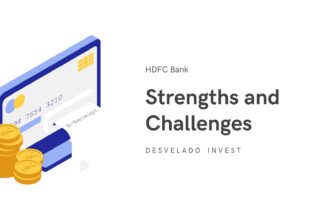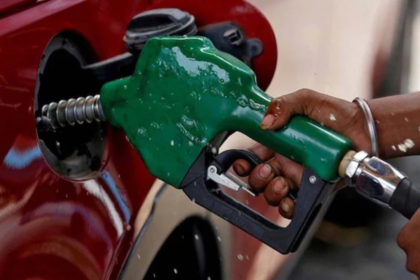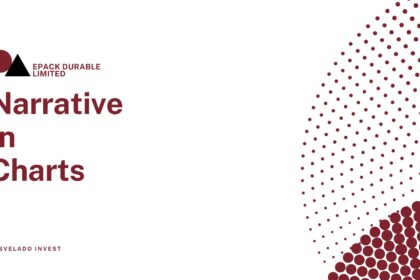NSE: HDFCBANK
HDFC Bank’s remarkable journey in FY24 showcases not only its robust growth in retail advances and asset quality but also the pressing challenges it faces in balancing profitability with an expanding credit deposit ratio amid a changing economic landscape.
| Strengths | Challenges |
| – Established market position – Healthy capitalisation, backed by strong asset quality – Earnings profile likely to remain healthy – Liquidity Position: Superior | – Impact of Material Weakening of macroeconomic factors can be a concern – Elevated CD ratio post merger, moderating the same remains monitorable |
Strengths
HDFC Bank Expands Branch Network and Grows Retail Advances to 54% in FY24
- HDFC Bank is the largest private sector bank in India, with total assets of Rs 36,17,623 crore as on March 31, 2024 (Rs 24,66,081 crore as on March 31, 2023), and a share of around 15% and 12% in system deposits and advances, respectively. Advances (net) and deposits were Rs 24,84,862 crore and Rs 23,79,786 crore, respectively, as on March 31, 2024 (Rs 16,00,586 crore and Rs 18,83,395 crore, respectively, as on March 31, 2023). Retail advances (including agriculture) constituted 54% of total advances as on March 31, 2024 (44% as on March 31, 2023).
- The bank is a market leader in non-mortgage retail asset segments such as commercial vehicles and car financing. It has also been expanding its geographical reach over the past few years; and has set up new branches primarily in semi-urban and rural areas. As on March 31, 2024, the bank had 8,738 branches, up from 7,821 branches in the previous fiscal.
- The bank is present in the broking business via HDFC Securities Ltd, which also operates as a third-party distributor of mutual fund products, insurance, initial public offerings, fixed deposits, bonds and non-convertible debentures. HDB Financial Services Ltd is a non-deposit-taking non-banking financial company, offering loans against property, commercial vehicle and construction equipment loans, and small and medium-sized enterprises financing; it had a loan book of Rs 90,218 crore as on March 31, 2024.
- Also HDFC Bank is now present in asset management, life insurance, general insurance, educational loans and investment advisory businesses through subsidiaries.
HDFC Maintains Strong Asset Quality & Capitalisation with 18.80% CAR and Low NPAs in FY24
- The bank has healthy capitalisation, underpinned by sizeable net-worth of Rs 4,40,246 crore as on March 31, 2024 (Rs 2,80,199 crore as on March 31, 2023). The overall CAR (under Basel III) was 18.80% as on March 31, 2024 (19.26% as on March 31, 2023). The capital position was further strengthened, with the bank raising Rs 23,651 crore as equity in fiscal 2019. Further, the bank raised USD 1 billion additional Tier I bonds (under Basel III) from overseas investors in August 2021. Also, steady internal accruals continue to support capitalisation.
- Asset quality of the Bank remains strong, with overall gross non-performing assets (NPAs) of 1.2% as on March 31, 2024 (1.1% as on March 31, 2023), lower than the industry average. Low gross NPAs, along with a healthy provisioning cover of 74%, led to a strong coverage for asset-side risk, with net-worth coverage for net NPAs at 54 times as on March 31, 2024 (64 times as on March 31, 2023).
HDFC Reports Strong Profitability with RoA of 1.94%-2% Despite Higher Credit Costs in FY24
HDFC Bank’s profitability remains robust, supported by strong and consistent growth in net advances, steady fee income, and favorable asset quality. Despite relatively higher credit costs compared to previous periods and integration expenses post-merger, overall profitability has stayed healthy, with Return on Assets (RoA) ranging from 1.94% to 2.00% during FY2022 to FY2024.
HDFC Exceeds Regulatory Liquidity Requirements with 115% LCR and 121% NSFR in Q4 FY24
As of Q4 FY2024, HDFC Bank’s (consolidated) daily average Liquidity Coverage Ratio (LCR) stood at 115%, surpassing the regulatory requirement of 100%. Similarly, the Net Stable Funding Ratio (NSFR) as of March 31, 2024, was 121%, exceeding the regulatory threshold of 100%. Furthermore, the bank maintains holdings of Statutory Liquidity Ratio (SLR) well above regulatory levels, which can be utilized for liquidity support from the Reserve Bank of India (RBI) through repo operations, including the marginal standing facility in times of urgent liquidity requirements.
Challenges
Asset Quality Challenges Amid High Interest Rates and Macroeconomic Weakness in FY24
- HDFC Bank has consistently maintained comfortable levels of asset quality, which has kept its credit costs low despite the potential impact of weakening macroeconomic factors. In FY2024, the bank’s fresh Non-Performing Asset (NPA) generation rate remained steady at 1.75% of standard advances (compared to 1.79% in FY2023), supporting favorable asset quality metrics with Gross NPAs (GNPAs) at 1.24% and Net NPAs (NNPAs) at 0.33% as of March 31, 2024. This stability was bolstered by substantial recoveries and upgrades, reflecting the granularity of recent slippages.
- Moreover, the bank maintains a significant floating and contingency provision of Rs. 27,300 crore (1.10% of standard advances) as of March 31, 2024, which is expected to cushion against potential asset quality stress.
- Overall asset quality metrics will remain stable, though challenges such as persistently high interest rates and the impact of macroeconomic weaknesses and geopolitical issues could potentially affect borrowers’ debt-servicing capabilities, warranting continued monitoring.
Challenge of Balancing Asset Growth with Reducing CD Ratio Through Deposit Mobilization
- Following the merger with HDFC Limited, HDFC Bank’s Credit Deposit (CD) ratio surged to 107% as of September 30, 2023, and peaked further at 110% by December 31, 2023. Although it moderated to 104% by March 31, 2024, it remained higher than the previous range of 85-88% observed during FY2021-FY2023. The bank has been actively working to moderate the CD ratio by expanding its deposit base.
- However, sustaining asset growth while reducing the CD ratio will necessitate robust deposit mobilization efforts. Therefore, managing the cost of funds effectively alongside achieving substantial deposit growth will be crucial areas to monitor going forward.







